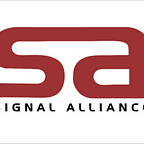Encouraging And Enabling Collaboration In Modern Workplace
The tools, technologies, and policies of a business directly impact an organization’s productivity and most important, profitability. The core role of IT is to enable business — whether it be transactional systems, systems of record, making data available in new and accessible ways, or making the day to day operation of the business more efficient and effortless.
One of the great things about enabling workplace collaboration through technology is that you do not have to do much for employees to adopt the solution. If the tool is intuitive to use, well thought out, and especially if some employees are already using it, everyone else will jump at the opportunity.
But often, IT departments have earned a reputation as gatekeepers to employee collaboration. “No, you can’t use Messenger.” “No, you can’t use Slack.” “No, you can’t use your personal device for work.”
Your collaboration tool should foster community and work together across business and social topics. Promotion, training, and education are still necessary, but if done properly, you shouldn’t encounter much resistance. Proper use guidelines can be relatively straightforward with regards to appropriate behavior and standards and tends to be self-correcting.
Tips on Becoming a Collaboration Champion
When it comes to employee communication and collaboration, IT leaders need to ask themselves, “Are we the gatekeeper to employees collaborating or are we enablers and champions?” Are we leading or are we allowing? When our actions and policies signal that we serve as gatekeepers, our employees and customers suffer.
Here’s a few tips to help you become a collaboration champion:
- Seek out new technologies, particularly ones that might already be in use in some corner of the business. Understand the use case and see if there is a case for consolidation or adoption corporate wide. One of the biggest challenges for many of us might be that we have not one tool but many — collaboration happens best when we can narrow the number of tools to the absolute minimum while meeting the use cases.
- Break down barriers to collaboration between teams and groups that are geographically remote. This means not only easily accessible video capabilities, but tools like shared workspaces, co-editing and co-authoring documents, interactive remote whiteboards. These systems need to be instantly accessible and easy to use.
- Obviously, we must balance collaboration with other considerations like security. In the modern workplace the user experience cannot be hampered by security controls — yet we must make sure corporate information and assets remain protected. Invest in technologies that remove this as a barrier to the user adoption and use.
- Fail forward — looking for new solutions and capabilities. Use pilots and smaller teams to experiment.
- IT should be leading and DRIVING change.
Transitioning from IT as a gatekeeper to IT as a weapon
Moving from a gatekeeper to an enabler requires IT to take on the leadership role in driving business process change and using technology to enable that change. Sometimes this is simply recognizing what one work-group is doing and become a promoter and enabler to spread that system or technology company wide. In other cases that is focusing on consolidating tools — where there are different and disparate tools in place that need to be rolled into a single solution. Sometimes it is piloting and encouraging a new way of working or to streamline a process or business workflow via collaboration. Sometimes it is introducing new concepts and working to break old paradigms and processes.
Be bold, move fast, fail small and fast — DRIVE business value! Be a weapon!
